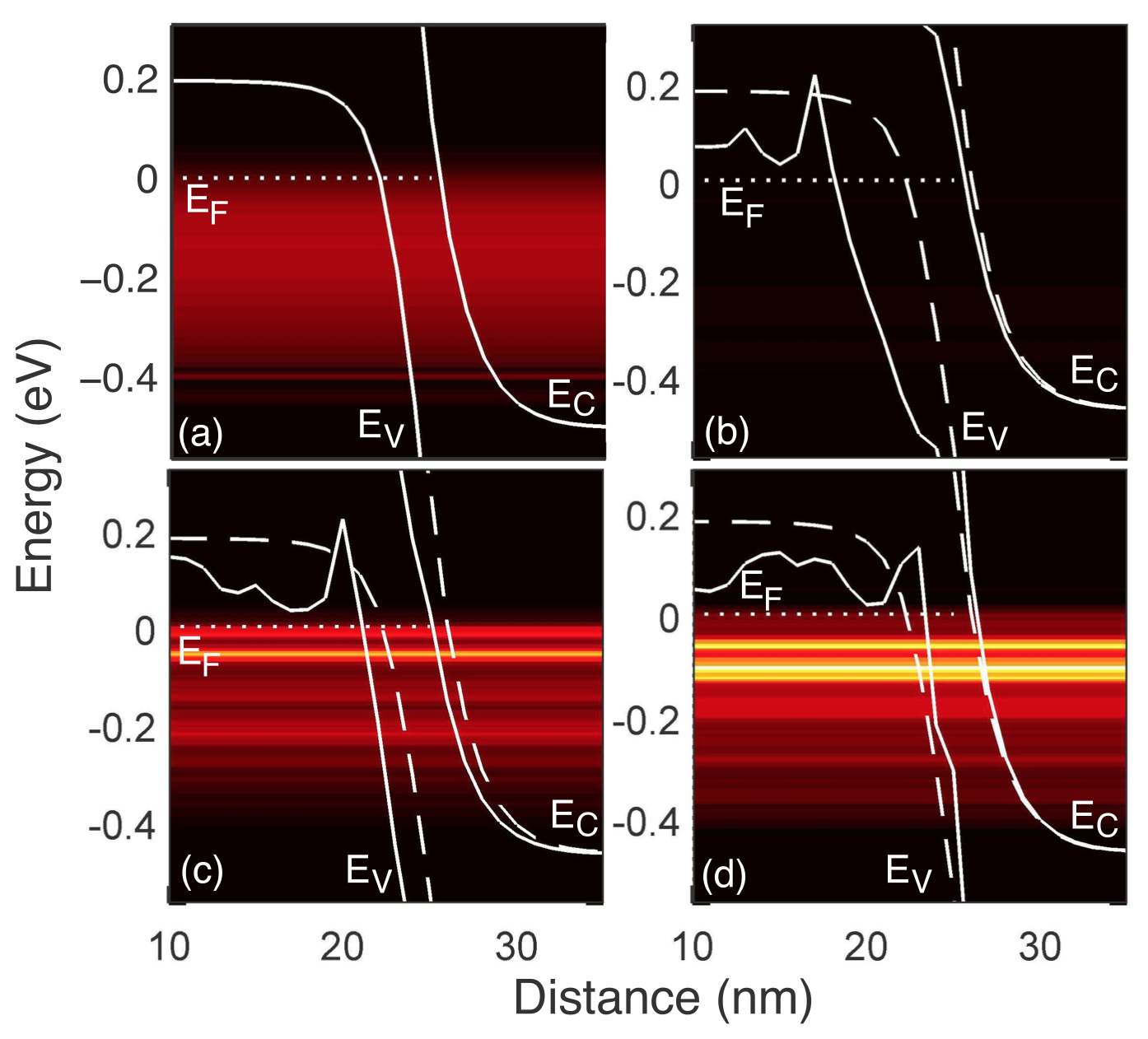Discrete Dopants in Nanowire Tunnel FETs
In a nanowire(NW) TFET, the small size of the NW geometry will result in a countable number of dopant atoms within a screening length of the source-channel interface.
Depending on the actual number and position of the dopants in the source, the local electric field defining the source-to-channel tunnel barrier will vary from device to device. Since the drive current of a TFET depends exponentially on the electric field in the tunnel region, this will result in a random variation of the drive current between nominally identical devices.
We analyzed the effect of discrete, random dopants in the source while keeping the channel of the NW TFET undoped. We performed a statistical study based on numerical simulations for TFETs treating the source dopants near the source-channel interface discretely. The discrete doping model has three effects that can modify the current:

Band diagram at the center of nanowire and energy resolved current density in the ON state for the (a) continuous doping case and three interesting cases in the discrete doped ensemble: (b) minimum current (c) minimum deviation from continuum case and (d) maximum current. Darker colors represent lower values of current. Ec, Ev, EF: the conduction, valence, and Fermi energies, respectively. In (b), (c) and (d), band lines from continuous doping model are shown in dashed white lines for comparison.
-
It changes the average chemical potential of the source: an average reduction in the chemical potential of the source results in a reduced electric field in the tunnel barrier near the Fermi level, and this results in reduced drive current.
-
It causes scattering in the source: although the source scattering does reduce the current compared to that of the ideal nanowire, its effect on the TFET current is negligible. The rate limiting step in a TFET is the tunneling through the bandgap.
-
It modifies the electric field of the interband tunnel barrier: Most important of all, the random number and position of the dopant atoms alters the width of the tunnel barrier from device to device. Since current is exponentially dependent on the barrier width, several orders of magnitude difference in current can result.
